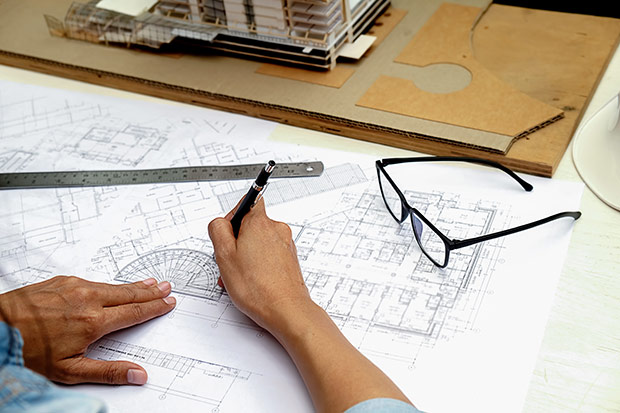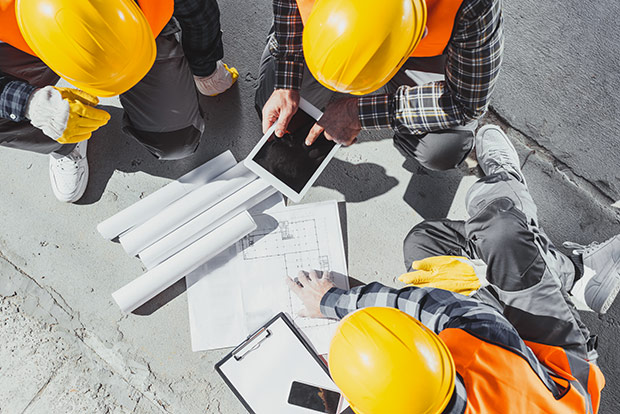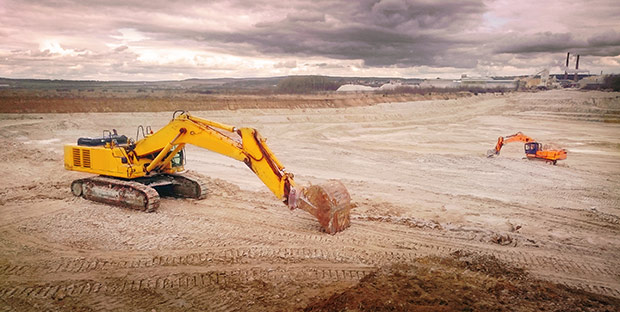TECHNOLOGY TRENDS: Innovations mean lawyers have to adapt along with industry
By: WISCONSIN LAW JOURNAL STAFF//January 23, 2020//
TECHNOLOGY TRENDS: Innovations mean lawyers have to adapt along with industry
By: WISCONSIN LAW JOURNAL STAFF//January 23, 2020//

By Brian J. Pfeil

Technology permeates all aspects of our society, so recognizing how technology affects our roles as attorneys is critical to keeping pace with the world we live and work in.
Technological advances have noticeably changed the construction industry over the past 10 to15 years, touching everything from project design to actual construction.
For example, 3D modeling in construction used to be relegated to large commercial projects because the time, space and materials needed to render a miniaturized 3D model was cost-prohibitive for anything else. The introduction of 3D modeling software now allows for the drawing up of accurate and detailed models for any size construction project and can be done efficiently and cost effectively. In addition, 3D modeling software allows for the visual depiction of projects to be shared with entire construction teams—owners, architects, engineers and contractors—even if their projects are in remote locations or members of the team are from different geographic areas.
Virtual Reality and Augmented Reality have recently taken 3D modeling to a whole new level by allowing construction teams to view projects as if they were there walking project sites themselves.
Owners of projects are able to use VR and AR to get a much better idea of what finished products will look like than they had been able to receive from blueprints and construction drawings. Like 3D modeling at its early stages, VR and AR are still quite expensive and are primarily used by large companies for complex projects. However, if VR and AR follow the same trend that we have seen with other emerging technologies over the past several decades, their cost will soon be lowered for a wide range of customers.
The incorporation of detailed VR and AR into construction projects presents a difficulty to construction lawyers. Whether VR/AR models should be considered artistic renderings which contractors are not required to follow precisely, or as a detailed and precise standards for contractors to follow like paper drawings and specifications, are matters that need to be discussed on the front end of projects. Liability for errors in the VR/AR model also need to be allocated in contracts. Architects have long been responsible for design deficiencies in construction projects, and the use of VR/AR in the construction industry signals a potential shift in that liability for lawyers to consider.
Similarly, the integration of drones into the construction industry also presents significant difficulties for lawyers. Drones are used today for surveying land, documenting site conditions and construction progress, and making calculations about construction sites. Drones can decrease the amount of time required to produce a survey. But who is responsible for any inaccuracies that might arise in a drone-generated survey if a drone was not operated by a licensed land surveyor? Drones that are equipped with cameras can also be used to document site conditions and construction progress, so contractors and owners no longer have to hire pilots to fly them above construction sites.
Drones are also used today to make calculations of, for example, the surface area of particular sites and the amount of soil excavated. But again, who is responsible for any inaccuracies if the calculations are wrong, or even perceived to be wrong? Do drones have to be routinely calibrated, like law enforcement radar equipment, for the information that they produce to hold up in a court of law?
Construction teams can use drones to maintain a constant connection to job sites. Contractors can even monitor their employees and workers. However, employees and workers could perceive this surveillance technique as an unwanted intrusion. Given the existing labor shortage, which already proliferates the construction industry, contractors might want to think twice about possibly irritating any existing and potential employees.
The construction industry as a whole has been slow to change. The fact that contractors still work on handshake agreements is evidence enough of this. Moreover, construction lawyers still use the same standard form contracts that have been firmly entrenched in the industry for decades. The time-tested method of choosing and designing projects, then negotiating contract terms for construction by taking into account the allocation of risk, has been used forever and is still used throughout the industry.
Although the method relied on to document construction projects may be slow to change, advances in technology have already begun to change the way projects are built job sites. Lawyers have an obligation to keep up with these changes and try to foresee how such changes may affect how construction contracts are drafted and how disputes arising from construction projects are litigated.
Legal News
- Wisconsin attorney loses law license, ordered to pay $16K fine
- Former Wisconsin police officer charged with 5 bestiality felony counts
- Judge reject’s Trump’s bid for a new trial in $83.3 million E. Jean Carroll defamation case
- Dozens of deaths reveal risks of injecting sedatives into people restrained by police
- The Latest: Supreme Court arguments conclude in Trump immunity case
- Net neutrality restored as FCC votes to regulate internet providers
- Wisconsin Attorney General asks Congress to expand reproductive health services
- Attorney General Kaul releases update at three-year anniversary of clergy and faith leader abuse initiative
- State Bar leaders remain deeply divided over special purpose trust
- Former Wisconsin college chancellor fired over porn career is fighting to keep his faculty post
- Pecker says he pledged to be Trump campaign’s ‘eyes and ears’ during 2016 race
- A conservative quest to limit diversity programs gains momentum in states
WLJ People
- Power 30 Personal Injury Attorneys – Russell Nicolet
- Power 30 Personal Injury Attorneys – Benjamin Nicolet
- Power 30 Personal Injury Attorneys – Dustin T. Woehl
- Power 30 Personal Injury Attorneys – Katherine Metzger
- Power 30 Personal Injury Attorneys – Joseph Ryan
- Power 30 Personal Injury Attorneys – James M. Ryan
- Power 30 Personal Injury Attorneys – Dana Wachs
- Power 30 Personal Injury Attorneys – Mark L. Thomsen
- Power 30 Personal Injury Attorneys – Matthew Lein
- Power 30 Personal Injury Attorneys – Jeffrey A. Pitman
- Power 30 Personal Injury Attorneys – William Pemberton
- Power 30 Personal Injury Attorneys – Howard S. Sicula









